This post is also available in:
日本語 (Japanese)
Imaishi — April 10, 2024
 Photo © by Christopher Pelham
Photo © by Christopher PelhamAfter one night in Tokyo and a quick lunch (inexpensive but outstanding chirashi-sushi with a photographer friend in Tsukuji), I took the Tohoku Shinkansen train from Ueno Station to Utsunomiya and transferred to the JR Nikko line but got off one stop early at Imaishi. Imaishi is the little town just to the east of the popular and historic temple town of Nikko, which was where I was heading, but Imaishi has its own famous cedar road and sakura road and I thought I would check it out on the way. Just outside the station, the sun already much stronger than I had expected in early April, I stopped into a small cafe to get a drink and ask for directions to the cherry trees. The owner wasn’t sure.
But one customer, a middle-aged Japanese woman, said, “I’ll show you.” I thought she meant show me on my phone, but she led me outside to her car and proceeded to drive me around town showing me the sites and having a lovely conversation! This is what happens to me in Japan. Her name was Hatsue, and she had lived for four years in Dublin, Ohio with her husband and three teenage daughters, and she wanted to practice her English.
Hatsue led me down a narrow alley lined with rustic shops to Hotoku Ninomiya Jinja 今市報徳二宮神社 shrine, the burial place of Ninomiya Songyo no Mikoto (aka Kinjiro), statues of whom, she said, are placed all over Japan.
 Photo © by Christopher Pelham
Photo © by Christopher Pelham
statue of Hotoku Ninomiya
His parents died when he was young, and through great work ethic and ingenuity, he lifted himself up out of poverty. When, after being orphaned, he went to live on his uncle’s farm, he began studying at night, but his uncle thought it a waste to use lamp oil to educate an orphan farm boy. Ninomiya promptly planted oilseed rape in an abandoned field and harvested it himself, sold it at market and used the proceeds to buy his own lamp oil. He then resumed his night studies. His statues show him reading a book while walking and are often placed near schools to inspire the children to study and use their time well, but his influence goes far beyond that.
Even more remarkably, from age 20 to 24 he worked as a sharecropper and saved enough buy to buy back his parents’ farm, impressing the locals enough to get himself hired to support the studies of a wealthy official, where he proceeded to study further along with them and, at the same time, invented the concept of a credit union, recruiting the household staff to make deposits and borrow for short periods with some interest whenever they needed it. The family clan itself caught wind and asked him to organize their finances similarly, and soon the Daimyo called upon Ninomiya to revitalize the farms and finances of his domain. Eventually, his great success encountered some jealousies and resentments, leading him to depart for a 221-day meditation retreat at a Buddhist temple. He returned with a renewed and deepened spiritual outlook and apparently the ability to articulate his fusion of Confucian and Buddhist values and civic-minded capitalism in a way that overcame his detractors. Ninomiya went on to counsel some 600 communities and inspire future capitalist titans such as the founders of Toyota and Matsushita Panasonic!
But before I learned anything about Ninomiya or even understood that this was the burial place of Ninomiya, what I noticed first at this shrine was a statue of cats! Was this a cat shrine (as well)? Wait, did one of them blink? Ah, a live cat guarded over the carved ones. Indeed, the shrine was teaming with live cats, well-fed cats at that. It seemed the cats and cat statues were new, perhaps a sign of shifting priorities of the current caretaker of the shrine?
One regular visitor to the shrine, Shoji Fujii, thought to provide some succor to fellow visitors who might be feeling tired from the pandemic. As people love animals, why not add some cheerful animal art to the shrine and invite people to pray for their pets’ good health? On January 30 of this year, a ceremony was held, and sculptures by Takayuki Ota, who was a chainsaw art world champion, as well as a variety of trays, chimes, and other objects adorned with animal imagery painted by Misa Ota, debuted at the shrine.
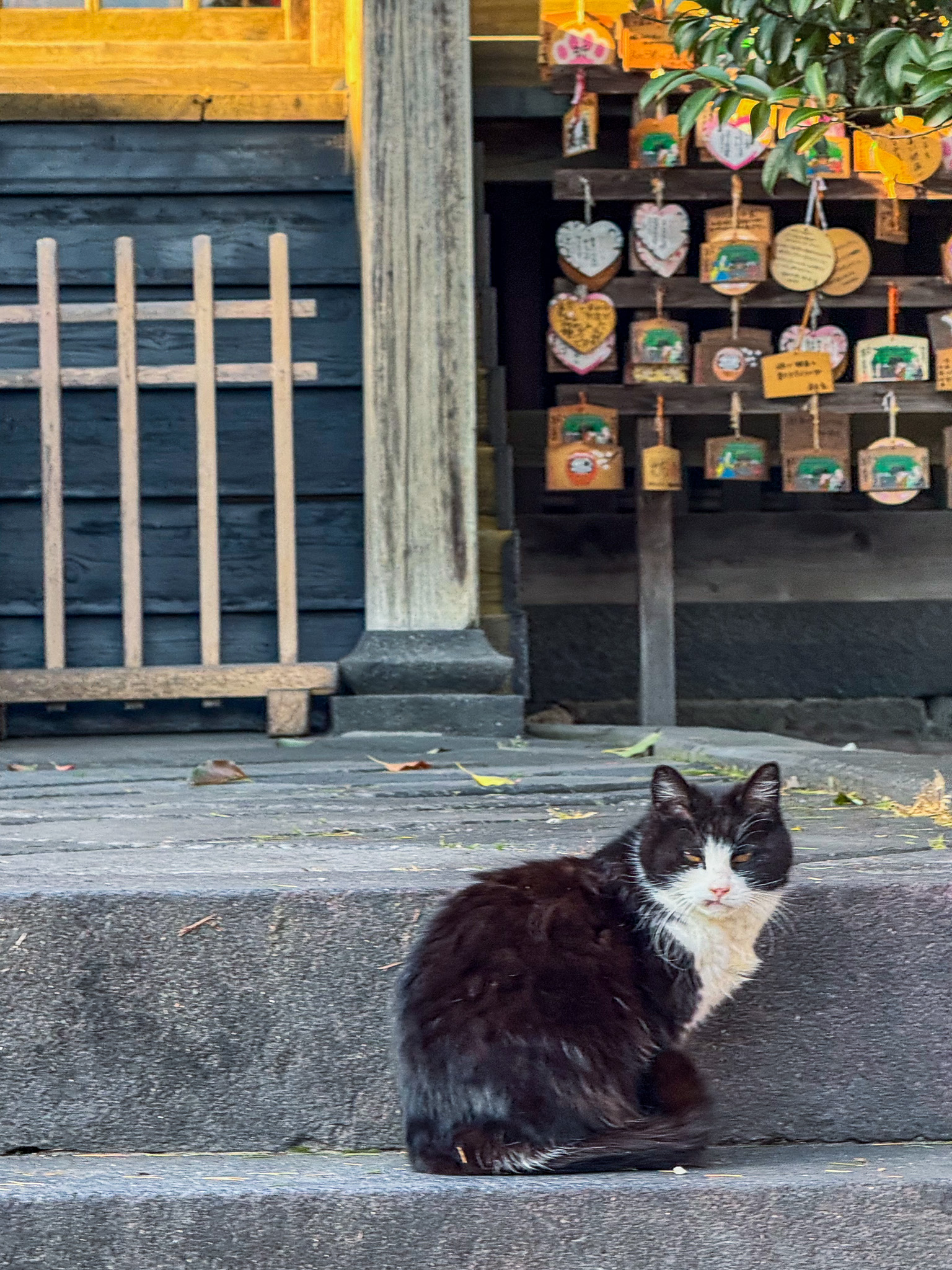 Photo © by Christopher Pelham
Photo © by Christopher Pelham
cat in front of art installation by Misa Ota
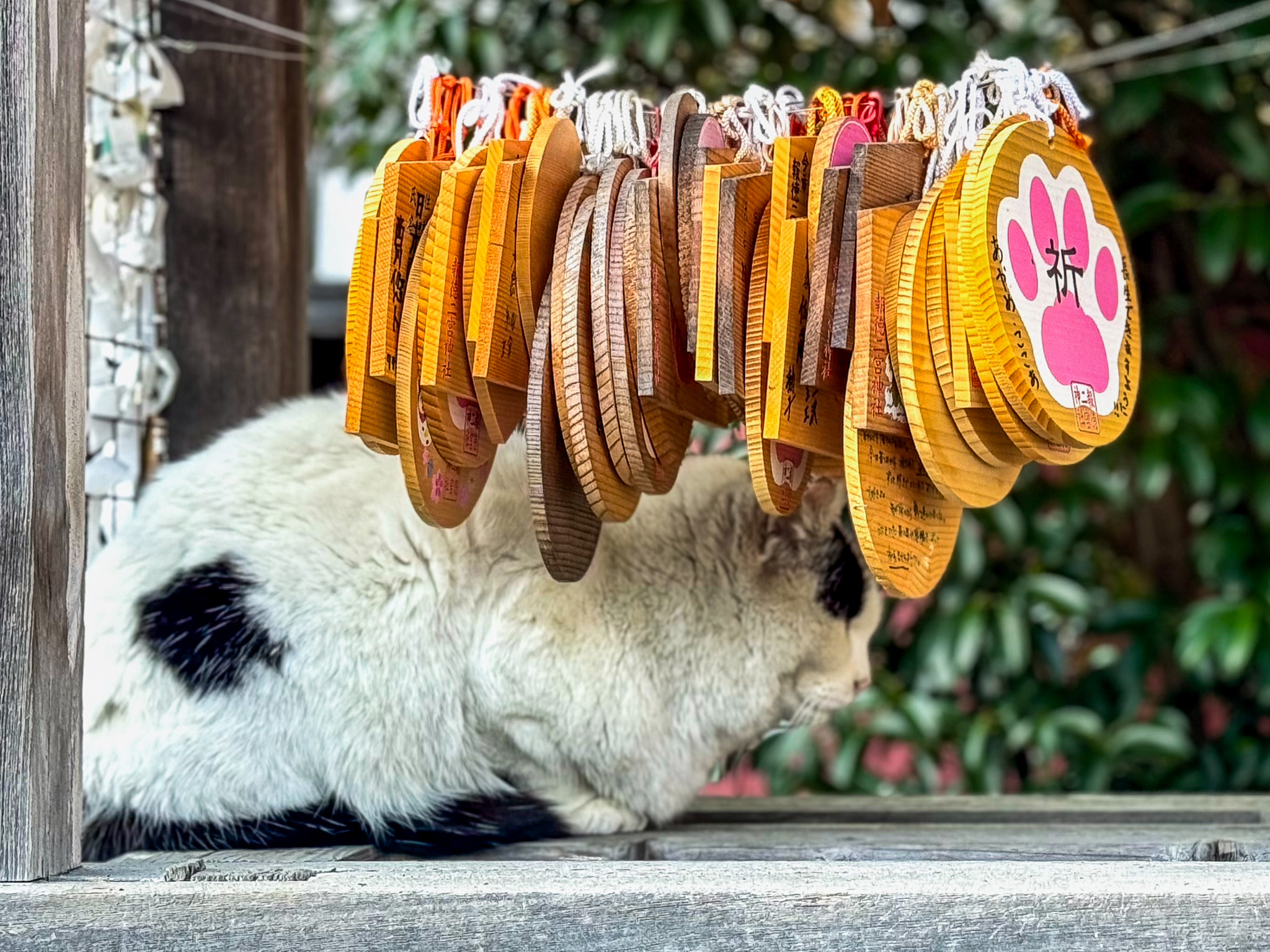 Photo © by Christopher Pelham
Photo © by Christopher Pelham
cat beneath art installation by Misa Ota
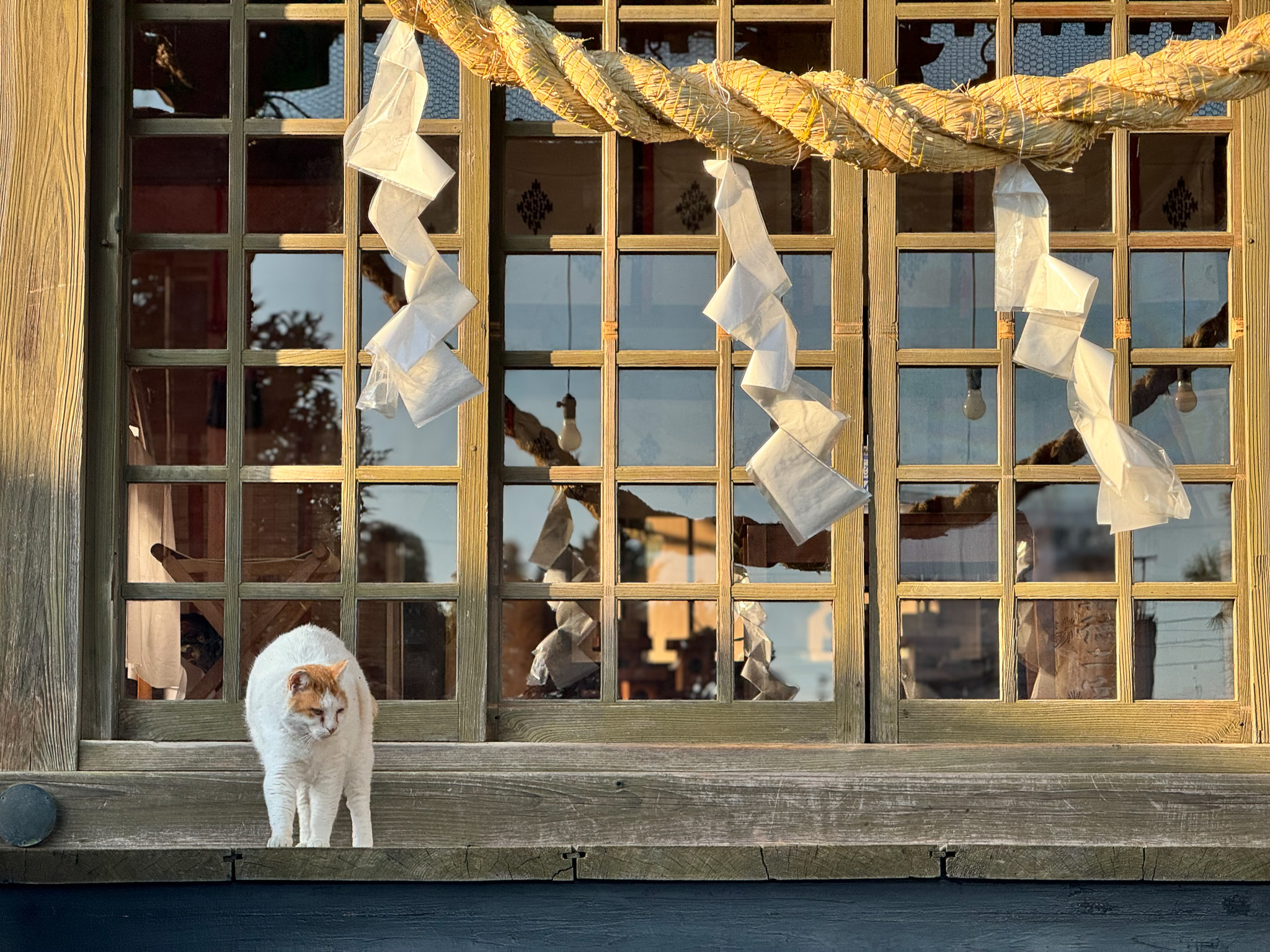 Photo © by Christopher Pelham
Photo © by Christopher Pelham
cat on the steps of Hotoku Ninomiya shrine
 Photo © by Christopher Pelham
Photo © by Christopher Pelham
live cat with animal sculptures by Takayuki Ota
Does the animal art dilute or usurp the primary purpose of the shrine? Or attract more people to visit and thereby into conversation with the teachings of Ninomiya? I’m not sure, but I myself, cat lover that I am, focused exclusively on the cats until Hatsue expressed surprise that I wasn’t going to also photograph the statue of Ninomiya, which did lead me to eventually research its meaning and his life, and I’m glad I did. It’s only anecdotal, but the handful of Japanese people I asked about Ninomiya were mostly aware of his many statues outside schoolyards but had tuned them out and did not know much about his many accomplishments.
For better or worse, mixing something cute and sentimental, yet genuinely good-hearted, with more spiritual and Confucian/Shinto (in the sense of promoting industriousness for the collective good) messages seems to be common in Japan so, whatever else it might say about the state of Japanese culture or mental health, maybe it is an effective means of attracting attention (as well as visitors and donations). I suspect Ninomiya’s spirit would approve, or at least not object.
And the cats themselves may be in on it. Like something out of “Twin Peaks,” an orange tabby guarded the entrance to the ancient Tamamo Alley leading to Ninomiya’s shrine. When I approached, it promptly crossed my path and pointed to the sign marking the direction to the shrine. Maybe the cats are not what they seem….
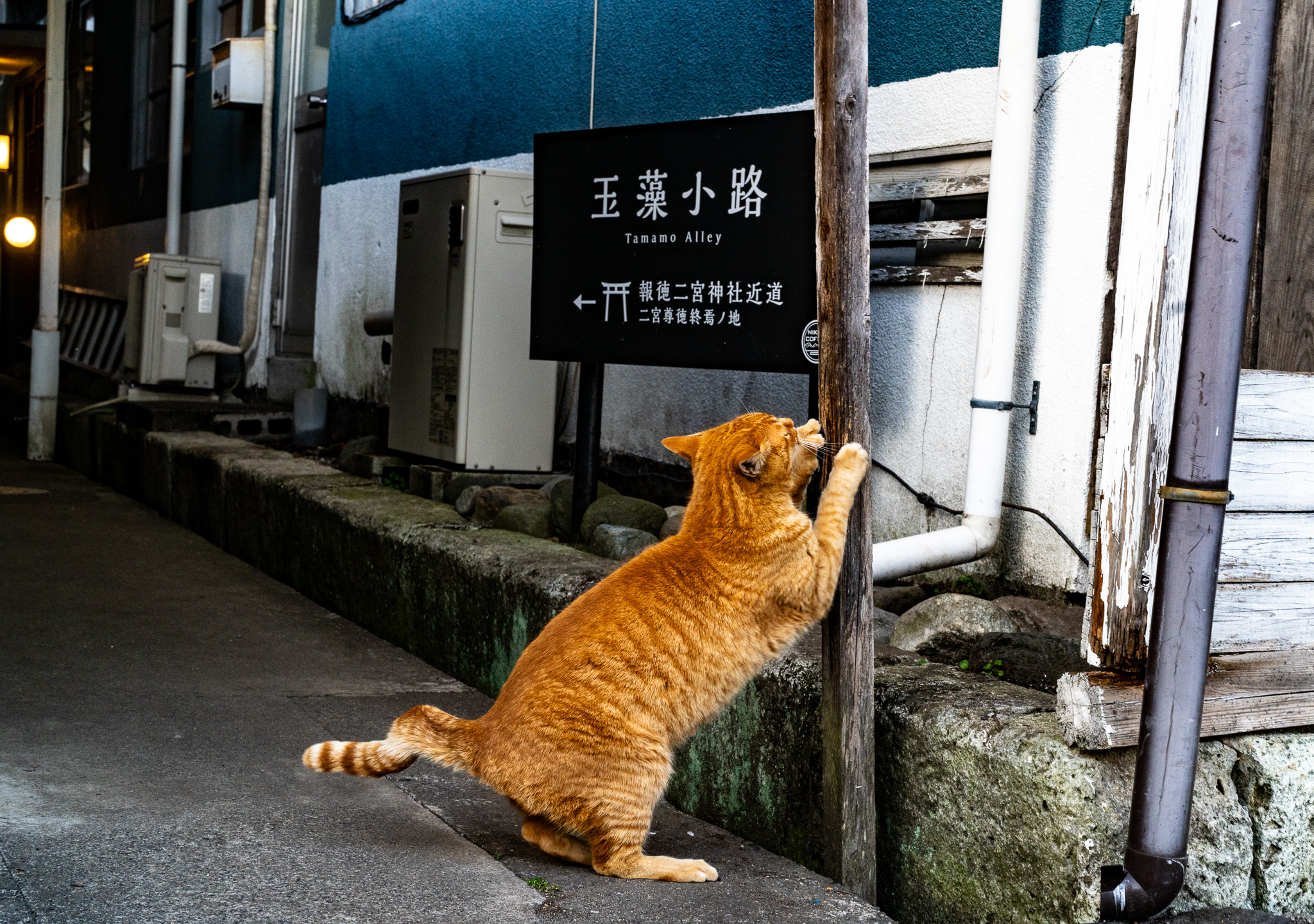 Photo © by Christopher Pelham
Photo © by Christopher Pelham
orange tabby cat marking entrance to Tamamo Alley
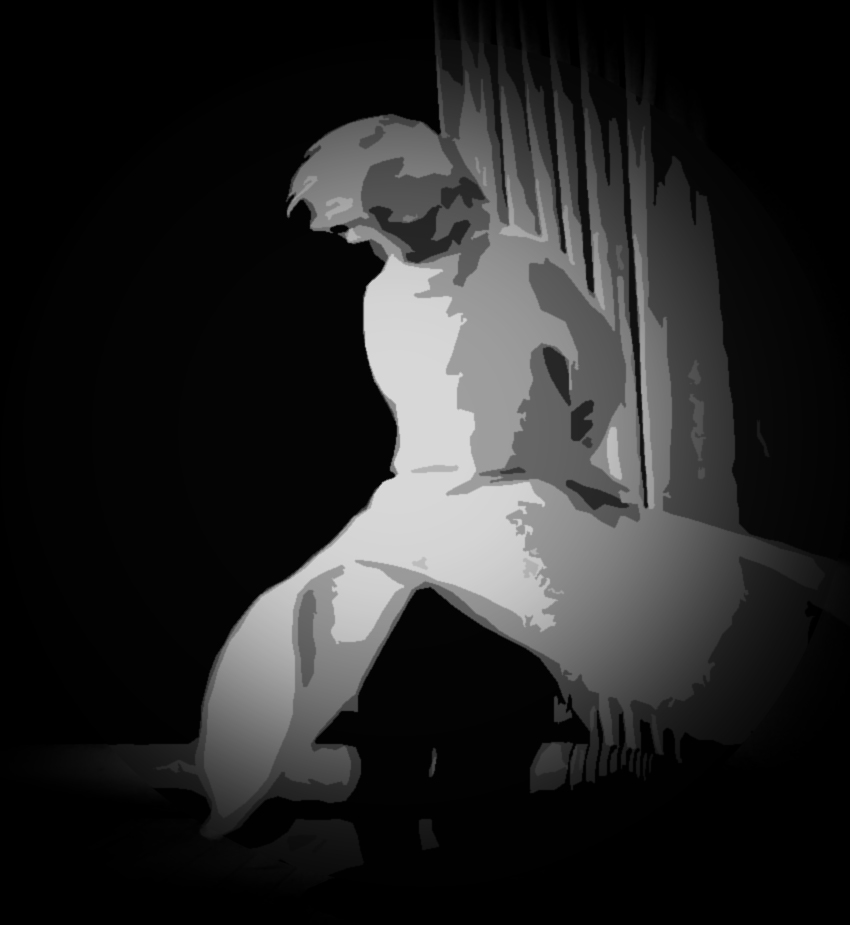
0 Comments